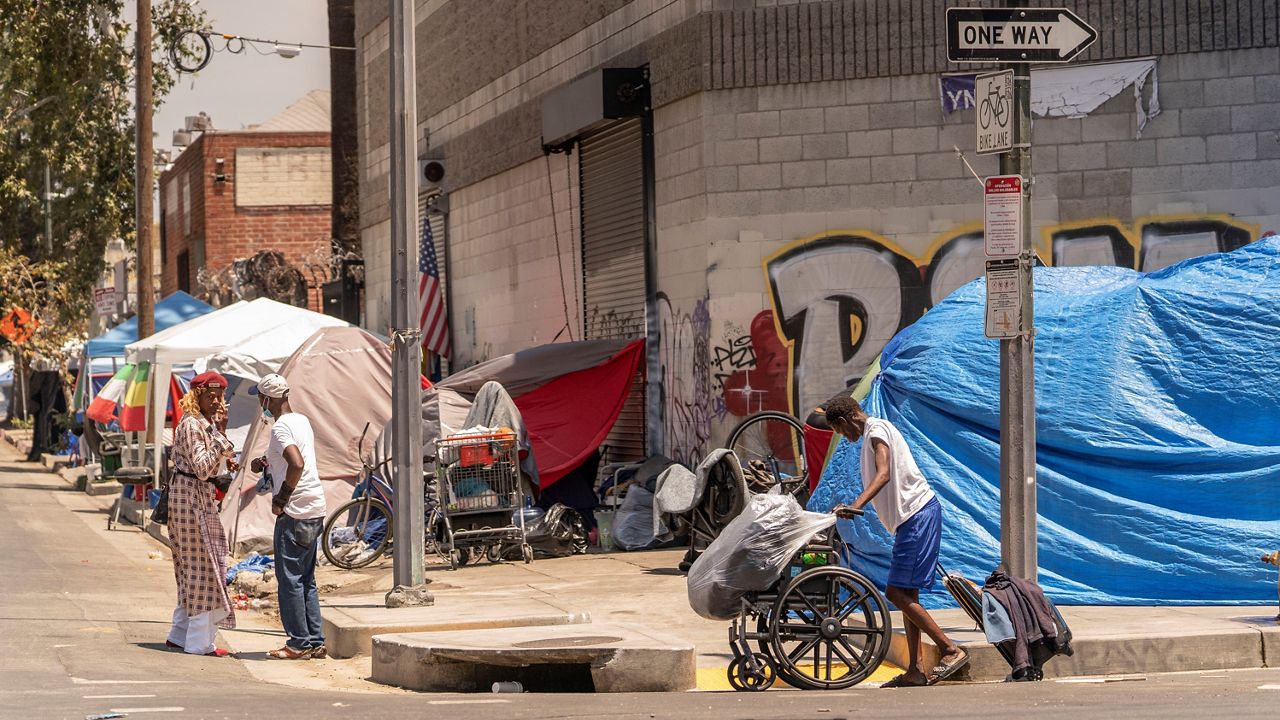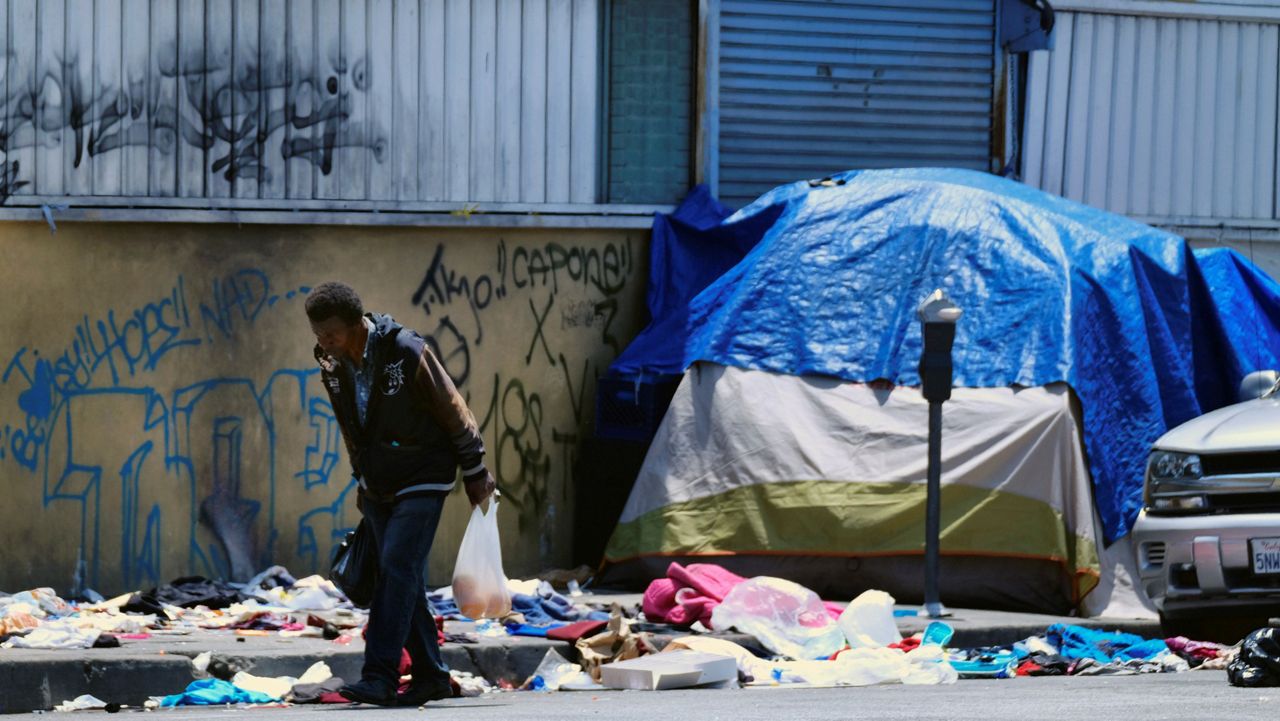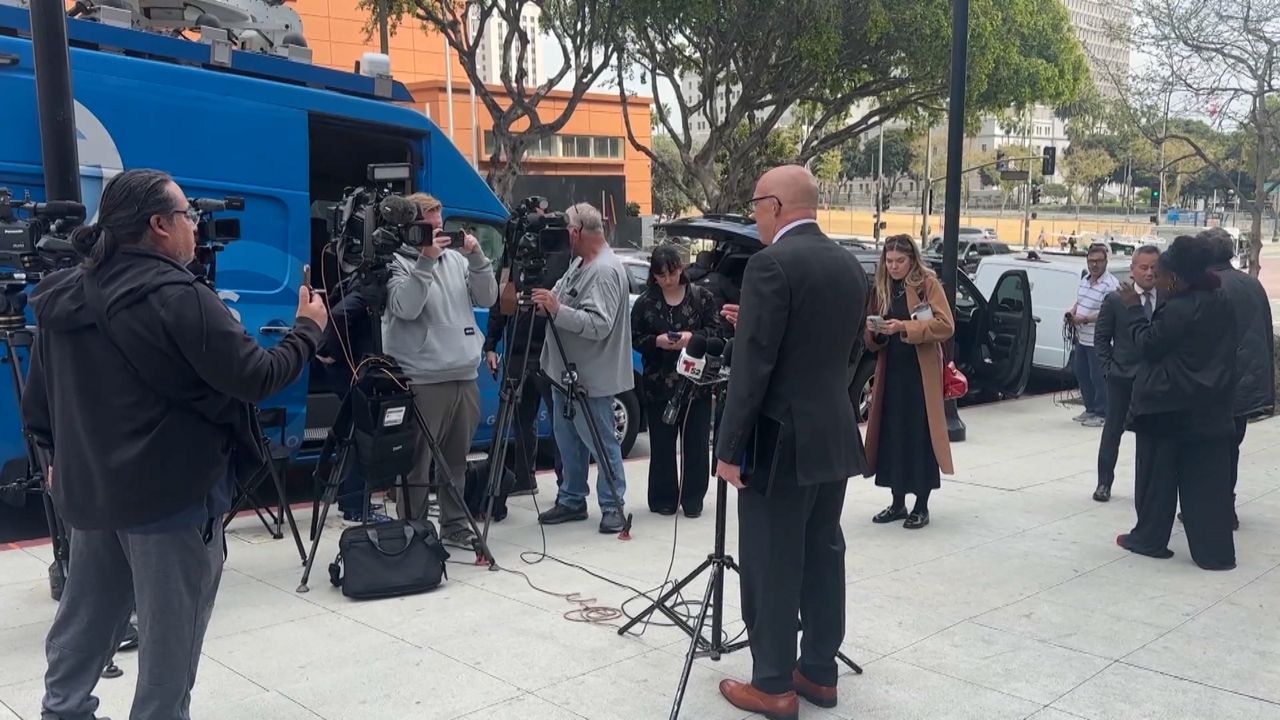LOS ANGELES — It seems Los Angeles has tried everything to reduce homelessness: tiny homes, permanent supportive housing, hotel vouchers, outreach teams. Still, people are falling into homelessness faster than the city can provide shelter. For every 205 people LA County placed into housing each day in 2020, another 225 lost the roof of their heads, according to the Los Angeles Homeless Services Authority.
What You Need To Know
- An ambitious new microloan program is stepping into the fray in LA, offering no-fee, zero-interest loans of up to $2,500 to low-income Angelenos at risk of eviction
- The Short-Term Eviction Prevention Fund is patterned after micro-finance programs that have helped low-income individuals and businesses in developing countries
- Adam Miller founded 1P.org to help solve difficult problems like homelessness with unconventional, experimental and cost-effective strategies
- Inflation is at a 40-year high, and the minimum wage at $16 in LA
Now, as part of a growing effort to prevent people from falling into homelessness, an ambitious new microloan program is stepping into the fray in LA, offering no-fee, zero-interest loans of up to $2,500 to low-income Angelenos at risk of eviction.
Called the STEP Fund, the Short-Term Eviction Prevention Fund is patterned after micro-finance programs that have helped low-income individuals and businesses in developing countries. The idea is that offering people on the verge of homelessness one-time cash assistance can decrease their likelihood of ending up on the street, at which point the situation becomes far more expensive and intractable.
“We spent a lot of time researching the issue of homelessness trying to understand what’s been tried, why the situation is continuing to get worse, what’s been effective in other cities and countries and whether there are any techniques that could be applied,” said Adam Miller, chairman of the social enterprise 1P.org, which is behind the $1.9 million STEP Fund launched last week. “One of the things that stood out is that 60% of people who are homeless in LA are homeless initially because of a financial shock.”
For some, their car might have broken down, or they got into an accident. Others may have had an unexpected hospital bill.
“It could be a whole range of things that cause financial shock, but because they were living paycheck to paycheck, that financial shock throws them off course, and they become incapable of keeping up with their rental payments and end up getting evicted,” Miller said.
The founder of a multi-billion-dollar, LA-based cloud computing company called Cornerstone OnDemand, which helps to educate adults, Miller founded 1P.org to help solve difficult problems like homelessness with unconventional, experimental and cost-effective strategies, such as the STEP Fund.
The current fiscal year budget for the city of LA includes almost $1 billion to address homelessness. But with more than 60,000 LA County residents experiencing homelessness, according to the last count from the LAHSA, and LA spending as much as $837,000 to build a single unit of permanent supportive housing, even $1 billion is not enough.
“Once somebody becomes homeless, it’s very expensive for the city, taxpayers, everyone involved,” Miller said. “But if you’re able to prevent them from becoming homeless in the first place, it’s actually fairly inexpensive. It’s like going to a doctor for preventative visits. It’s a lot harder to fix after finding out something is wrong.”
Around $1,900 keeps people housed and gets them through the financial shock, Miller said of the microloans, which range from $500 to $2,500, depending on what’s needed.
The STEP Fund is launching as the average rent for a 791-square-foot apartment in Los Angeles is $2,734, according to RentCafe.com, and as the average living wage for LA County is $22 per hour for a single adult without children or $47 per hour for two adults with two kids, according to the Massachusetts Institute of Technology.
With inflation at a 40-year high and the minimum wage at $16 in LA, a lot of Angelenos are struggling to keep up and are increasingly at risk of losing shelter.
The program is seeking about 1,000 participants for the new microloan program. To apply, individuals fill out an application on the STEP Fund website, after which they are interviewed and their situation is verified for eligibility. Those who are approved generally earn less than 50% of the median income for their area and can receive the micro-loan funds in about a week.
“We’re not trying to solve for situations where somebody is chronically in a situation like this because a loan is not going to help them,” Miller said. “But there are many, many people that had this financial shock where one-time assistance is extraordinarily helpful and keeps them housed.”
The money can be used for housing-related expenses such as rent, security deposits and moving costs and are usually paid directly to landlords. Available to low-income individuals who are undocumented as well as those who do not have a bank account, microloan recipients are expected to repay the loans starting 60 days after receiving the money. Repayments are spread over three years and can be paid with cash at Walgreens and 7-Eleven locations but if a recipient cannot repay, they are not penalized.
While Miller anticipates a default rate of as much as 30%, the STEP Fund expects to repaid so it can recycle the funds into microloans for future participants. It also hopes to make the case that a system like this is beneficial.
“The goal is to prove its efficacy and then scale it up,” Miller said. “Even if we impact 1,000 people, that won’t solve the problem. We want to be able to prove it, and then based on that, raise incremental funds from the private sector or from government.”
Miller’s 1P.org developed the STEP Fund based on research about homelessness prevention from the California Policy Lab and the University of Notre Dame’s Wilson Sheehan Lab for Economic Opportunities, the latter of which will spend the next few years studying the fund’s efficacy.
“Microloans have been used heavily in developing countries in a variety of ways to boost consumption but not necessarily for housing stability, so it’s not known whether this is an effective intervention,” said Notre Dame researcher Rob Collinson.
Collinson is working with the STEP Fund to research its eligible applicants and learn “whether or not they’re given preferred access to get these loans versus being referred out to try and seek services or assistance elsewhere.”
His research team will track 500 individuals who have received the microloans and 500 who have not for the next four years in order to see if they are receiving homeless services, such as a shelter or visits from a street outreach team, or if they’ve been stably housed.
“Part of what’s exciting about this type of opportunity is we don’t know if this will work,” Collinson said. “It’s important to test it in a rigorous way to find out.”
Last September, the STEP Fund launched a pre-pilot program with more than 30 LA residents who received microloans. All the recipients were people of color; two-thirds were women. The average loan amount was $2,000.
“I’m so grateful because without this loan, I’d never get this home,” said Courtney Bailey, a 28-year-old mother of five from Watts who participated in the pre-pilot program last September after receiving a three-day notice of eviction.
Without the microloan, Bailey said she would have had to move her family into her mother’s one-bedroom apartment, but because of the microloan, she was able to make the down payment on a four-bedroom where she currently lives.
“Now I’m able to put time into my dreams,” said Bailey, who recently received an associate degree and is hoping to get a bachelor’s degree in biology. “Because of my living situation, I’ve been able to graduate school because I’m not in a stressful, hostile environment. I’m not working double shifts just to make it. I’m able to put time into things that I want to do.”









